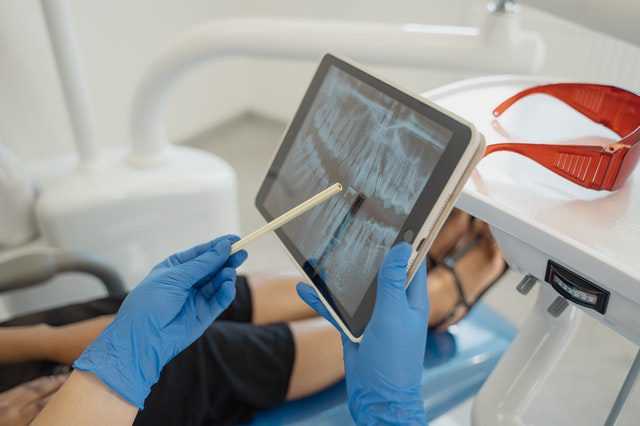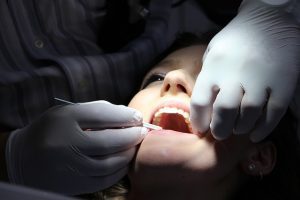When you hear about impacted teeth, your first thought is likely a complex wisdom tooth extraction that includes shaving into the jaw and/or dental bone grafting to complete. The word “impacted” never gives you a good feeling. But other teeth can become impacted, too, and one of the most common teeth that fail to erupt and get stuck under the gums are eye teeth, commonly referred to as our canines.
Why do Canines become Impacted?
The main reason eye teeth fail to erupt is overcrowding in the mouth. There might be extra teeth, too little room, or abnormal growth of the gums. As a young child, your adult teeth develop up inside your jawline; a dental x-ray. (Psst… It looks really cool on x-rays; and in cases of archaeological excavations, unerupted adult teeth can help scientists determine the age of a skeleton!)
The reason a child’s milk teeth fall out is because the adult tooth is starting to move toward the gum line, where it will eventually erupt. Canines are located in a place where they not only start out higher in the jaw than the surrounding teeth, but the placement within the arch of your bite makes it easiest for a crowded mouth to push them out of the way in favor of the other teeth.
Here’s the thing, though: unlike your wisdom teeth, you need your eye teeth. That means pediatric dentists and oral surgeons should closely monitor the development of their patient’s adult teeth via x-ray way before they start to come in. Eye teeth are guide teeth for the rest of your mouth whenever you bite down on anything. Impacted eye teeth can cause big problems with the appearance, function and health of your smile if not intervened with early on.
How are Impacted Canines Treated by an Oral Health Provider?
Most of the time, correcting impacted eye teeth requires either or both a pediatric oral surgeon and an orthodontist. Often, an oral surgeon will extract teeth to make room for the canines. Depending on the stage of development, one of three things usually happens next:
- If the pediatric dentist sees early on that the child’s mouth is going to be too crowded, they may send them to an orthodontist, who makes a brace that guides the arch of the mouth to leave room for the eye teeth.
- If the tooth is already impacted and needs exposed, an oral surgeon will cut into and lift the gums to expose the tooth. Depending on the angle and severity of the impaction, they’ll either leave the tooth to erupt on its own, or use a brace to guide it into place. Because of the delicacy of the procedure and the fact it’s being done for a child, sedation is used for this oral surgery.
- If the eye tooth is stuck high up in the jaw and needs extensive repositioning and guidance into its correct position, a longer-term solution, which includes a couple oral surgeries and close monitoring an adjusting by an orthodontist is used. Basically, the oral surgeon cuts into the gums to expose the impacted tooth, attaches a bracket, and leaves a “window” in the gums. This way, the orthodontist can monitor, encourage and guide the eye tooth as it comes in. This method might include soft tissue grafting where gum tissue was removed.
With all pediatric maxillofacial care, early detection and intervention is key to achieving the most aesthetically pleasing appearance possible with the least amount of invasiveness involved. Plus, kids heal better and faster than adults. So if your dentist is concerned about your kindergartner’s bite, go to an orthodontist or oral surgeon early, while they can still take these preventative measures. If you wait, you might end up with a sullen teen who resents their cantilevered canines and years of spacers, braces and retainers.










